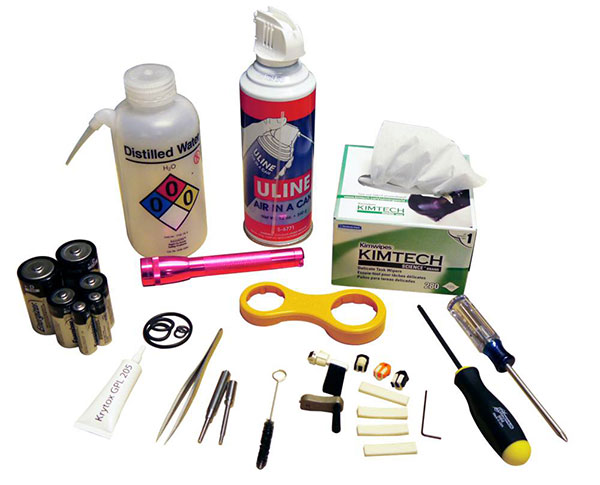Here it is, our final tip in this series. If you haven't had a chance to read our previous tips 1-6, after you complete reading this one of course, find the direct link to each tip below.
Tip #7: When Going Into the Field, Always Bring a Survival Kit
Our technical support group talks to dozens of people every week and thousands of people in the course of a year. During some of these customer calls, our technical support team's ability to help is limited because the person calling does not have any tools or supplies with them to go through some of the basic troubleshooting steps while in the field.
This is why we recommend you put together a survival kit specific to your instrumentation and needs. We will give you some pointers on items to include in your kit but you’ll need to determine what else goes into the kit. Think about where you are going and consider the resources you will have once you get there.
Sometimes we need to drive or ride in a boat for hours or hike in the wilderness for a while before we get to the sampling site and there might not be anywhere to obtain parts for troubleshooting.
First and foremost, make sure you have some tools with you that will allow the removal of a probe or the cover of the battery compartment. Most instruments are provided with a maintenance kit that includes these tools or other specialized components like o-rings and grease so there’s a good place to start when assembling your survival kit. In addition, a Phillips and flat head screwdriver often come in handy as well as a small flashlight, a can of compressed air, extra wiper pads or brushes, paper towels, Kim-Wipes, DI water and a few calibration standards might be helpful just in case.
Extra cables and probes may be of use if available and we always recommend taking some port plugs which take the place of a probe when its not installed. Of course don’t forget spare batteries and make sure the components in your kit that have a limited shelf life are swapped out regularly. If you take a small survival kit with you and a problem arises, you are going to be prepared to do some troubleshooting and hopefully get back on track so you can collect your water quality data.
So to wrap this series up, here are the big steps you can take to ensure a seamless transition into the field.
We hope you have found the expert tips we have been sharing with you over the past few weeks helpful, and now you and your water quality sonde should be absolutely field ready!
A special thanks to our technical support team for providing some of the information in this post.
Additional Blog Posts of Interest:
YSI Expert Tip #1: Always Inspect the Condition of Your Sensors.
YSI Expert Tip #2: Properly Maintain Your Instrument Sensor Connections.
YSI Expert Tip #3: Always Check Your Batteries and Power Supply.
YSI Expert Tip #4: Always Keep Firmware & Software Updated.
YSI Expert Tip #5: Properly Calibrate All Your Sensors Prior to Collecting Data.
YSI Expert Tip #6: Finalize Your Sonde Settings Prior to Leaving for the Field.